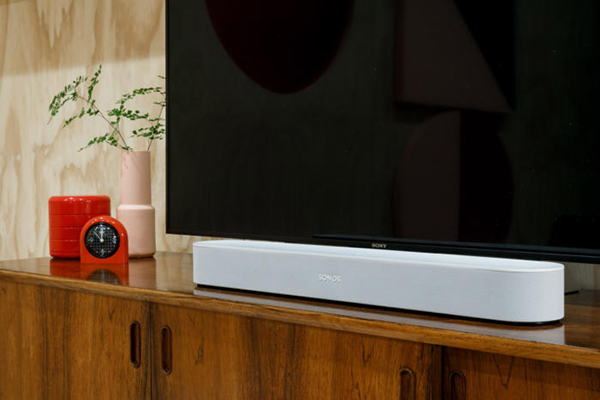Sonos Launches Beam Sound Bar with Amazon Alexa
 This week Sonos launched the Beam Sound Bar with Amazon Alexa integration. Priced at $399, the Beam is smaller and less expensive than other Sonos sound bar products, like the Playbase and Playbar, which start at $699. The Beam has a tri-channel speaker set up and connects to your TV via HDMI port. The direct HDMI connection from Beam to TV allows you to turn the TV on and off with voice commands, rather than using a remote. It is also Airplay compatible with iOS devices, and if you have Amazon Fire TV, you can easily use your voice to pull up, pause, and play shows without using a TV remote.
This week Sonos launched the Beam Sound Bar with Amazon Alexa integration. Priced at $399, the Beam is smaller and less expensive than other Sonos sound bar products, like the Playbase and Playbar, which start at $699. The Beam has a tri-channel speaker set up and connects to your TV via HDMI port. The direct HDMI connection from Beam to TV allows you to turn the TV on and off with voice commands, rather than using a remote. It is also Airplay compatible with iOS devices, and if you have Amazon Fire TV, you can easily use your voice to pull up, pause, and play shows without using a TV remote.
The “Switzerland of Sound”
Dieter Bohn of the Verge in a video review commented that Sonos “wants to be the Switzerland of sound” and doesn’t “want to give anyone any preferences” over which voice assistant they use to control the products. The company’s Senior Director of Experience Strategy, Mieko Kusana, follows up on that thought: “We believe many people [in the home] would want to use [the sound bar]. We don’t want to dominate what the right control paradigm for people is, nor divide assistants…we don’t [find that to be] very consumer friendly.” The company’s intent to provide access to multiple voice assistants gives it an advantage in households where multiple users may have varying preferences.
However, while Sonos wants to unite all the voice assistants, the company also wants to own the living room. The latest sound bar with deeper integration into the TV is a step in that direction. That goal is at odds with other sound bar manufacturers such as Polk and Roku, who aim more at integration within their own ecosystem, than ownership over it. You could also see Sonos coming into conflict with Amazon and Google in their quest to own every corner of the home. The difference is that Amazon and Google only care about ensuring their voice assistant is present in the living room, regardless of what hardware is used to access it. At the press conference of the Polk Command Bar reveal, Alexa Exec Dave Limp said, “We want Alexa in every room in the house.” Sound bars, have at it.
The Prediction Comes True
In April, we speculated whether Sonos’s regulatory filing for a new product was a sound bar or another smart speaker. Two weeks ago, after reporting on Polk’s new voice-integrated sound bar, we wondered whether Sonos’s advertisement for their June 6th product reveal was hinting at a universal remote or a voice-integrated sound bar of their own. The sound bar hypothesis was clearly the winner, with multiple control options. The product page encourages you to use the control of your choosing: your voice, the Sonos app, AirPlay, or any music listening app.
At the moment, the Sonos sound bar is compatible only with Amazon Alexa. Based on Kusana’s statements and the company’s announcement last October to include Google Assistant on the Sonos One speaker, it seems likely that Sonos will continue this practice of uniting multiple voice assistants within one speaker in more of their products. While Sonos is not the first sound bar to integrate a voice assistant, it may turn out to be the first one to support multi-assistant integration.
Sonos Patent Portfolio Used to Persuade Google to Allow a Multi-Assistant Device
Roku to Launch Own Voice Assistant, License OS for Audio Devices








